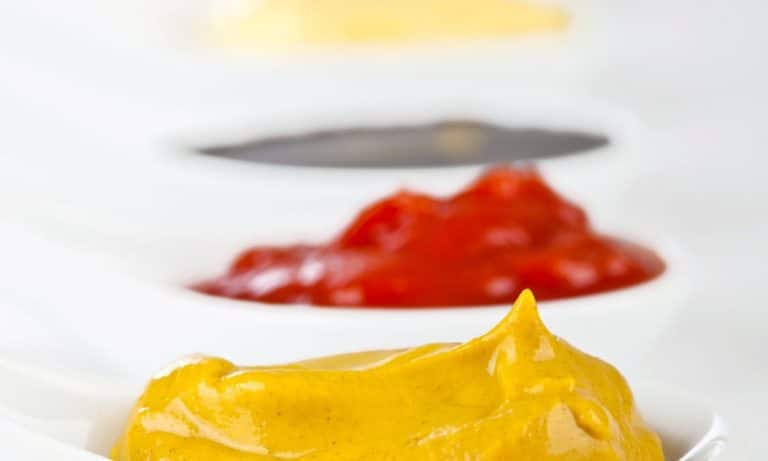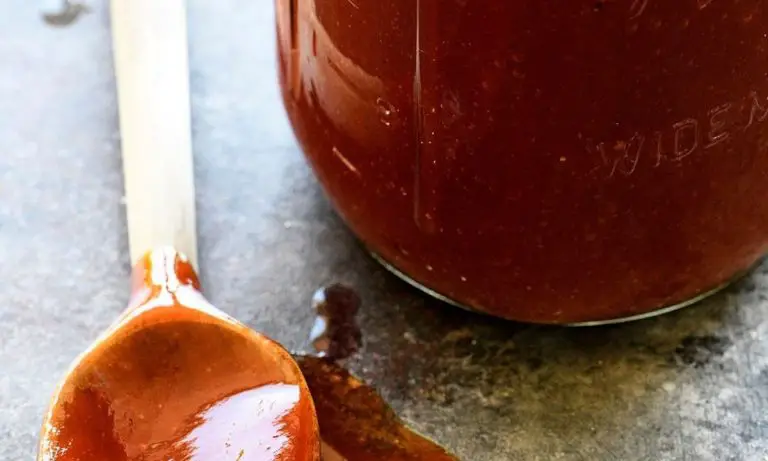Doenjang Recipe: Delicious Addition to Your Kitchen
I’m always looking for new components. Korean cooking uses the Doenjang recipe, a fermented soybean paste. It’s protein- and probiotic-rich and tasty.
I will show you how to make Doenjang at home and answer your concerns about this versatile ingredient.
What is Doenjang?
Doenjang is a traditional Korean condiment that has been used for centuries in Korean cooking. It is made by fermenting cooked soybeans with a specific type of mold called Aspergillus, along with salt and water.
The fermentation process can take several months, during which the mixture is stirred and aged to create a rich, savory flavor. The resulting paste is thick and creamy, with a slightly nutty aroma.
Doenjang is an essential ingredient in many Korean dishes, including soups, stews, marinades, and dipping sauces. It is also used as a condiment, often served alongside rice or vegetables.
The flavor of Doenjang is often described as savory, earthy, and slightly salty, with a slightly nutty aroma.
How to Make Doenjang
I’ve been trying to make Doenjang, a fermented soybean paste used in many Korean foods. I’ve spent hours perfecting the method, but I’ve learned that proper storage is key to homemade Doenjang’s quality and freshness.
After storing Doenjang poorly, I learned this. When I used it a few weeks later, I noted a strange smell and texture—my Doenjang had spoiled. All that work was wasted!
I researched and spoke with experts to learn how to store handmade Doenjang without spoiling. I’m eager to share these secrets so you can enjoy homemade Doenjang without spoilage or flavor loss. Let’s begin!
Doenjang Ingredients
- 4 cups of soybeans
- 2 cups of wheat flour
- 10 cups of water
- 2 cups of coarse sea salt
- 1/2 cup of meju powder (available at Korean grocery stores)
Equipment:
- Large pot
- Cheesecloth or a clean cotton cloth
- Fermentation container with lid
Step-by-Step Instructions to Make Doenjang Doenjang
Step 1: Soak the Soybeans
Rinse the soybeans and soak them in water overnight. Drain the water and rinse the soybeans again.
Step 2: Boil the Soybeans
Place the soybeans in a large pot and add enough water to cover them. Bring the water to a boil and then reduce the heat to medium-low. Simmer the soybeans for 3-4 hours, stirring occasionally.
Step 3: Make the Meju
Mix the wheat flour and meju powder with water to make a dough. Knead the dough into small balls and flatten them into discs. Place the discs on a clean cotton cloth and let them dry for a few days, until they are completely dry.
Step 4: Ferment the Soybeans
Mix the boiled soybeans, meju, and coarse sea salt in a large bowl. Crush the mixture with your hands until it forms a paste. Transfer the paste to a fermentation container and cover it with a lid. Let the mixture ferment for at least 6 months, stirring occasionally.
Step 5: Strain the Doenjang
After 6 months, the Doenjang should be thick and creamy. Strain the mixture through a cheesecloth or a clean cotton cloth to remove any solids. The resulting liquid is your Doenjang.
Is it necessary to use meju powder to make Doenjang?
Yes, meju powder is necessary to make Doenjang. It contains the specific mold (Aspergillus) that is required for the fermentation process.
Can I use any type of salt to make Doenjang?
It is recommended to use coarse sea salt when making Doenjang, as it contains minerals that are beneficial for fermentation.
How long does it take to make Doenjang?
Doenjang takes at least 6 months to ferment, so it requires some patience.
How to Use Doenjang in Cooking
Soups stew Korean soups and stew like Doenjang-jjigae and Maeun-tang use doenjang. (spicy fish soup). It thickens the soup and adds a rich flavor.
Doenjang can base meat and veggie marinades. To make a complex marinade, mix Doenjang with garlic, ginger, and other spices.
Stir-fry veggies and meats with doenjang. Stir-fry your ingredients with a spoonful of Doenjang and other spices.
Dipping Sauces Vegetables, meats, and fish can be dipped in doenjang. Make a tangy dipping sauce with Doenjang, vinegar, sesame oil, and spices.
Noodles and Rice Doenjang flavor rice and noodles. Doenjang, sesame oil, and soy sauce make a tasty sauce for pasta or rice.
Substitutes for Doenjang
- Miso Paste Japanese miso paste is fermented legumes. It tastes and feels like Doenjang and can be substituted in dishes. Miso paste is milder than Doenjang, so you may need to modify the amount in your recipe.
- Hoisin Sauce Chinese hoisin sauce contains soybeans, ginger, vinegar, and sugar. Its thick texture and mildly sweet taste make it a good Doenjang substitute.
- fermented beans Chinese doubanjiang fermented bean paste contains legumes, salt, and water. It tastes and feels like Doenjang and can be substituted in some dishes.
- Middle Eastern tahini is pureed sesame seeds. Although it tastes different from Doenjang, it can be used in recipes that ask for a thick, nutty paste.
Doenjang vs. Miso: What’s the Difference?
Doenjang and Miso are both fermented soybean pastes used in Asian cooking, but they have different origins, ingredients, flavors, textures, and culinary uses.
Doenjang is a Korean ingredient made with salt and Bacillus subtilis bacteria, while Miso is a Japanese ingredient made with salt, Aspergillus oryzae fungus, and other grains.
Doenjang has a deep, savory flavor and a thick, chunky texture, while Miso has a milder, sweeter flavor and a smooth texture. Both are used in soups, stews, marinades, and dressings, but in different ways according to the cuisine.
How Do You Store Homemade Doenjang
To store homemade Doenjang, it is important to keep it in an airtight container to prevent air and moisture from getting in and spoiling the paste.
For long-term storage, it is recommended to refrigerate the Doenjang, placing the container in the back of the refrigerator where the temperature is the most consistent.
Make sure to use a clean spoon or utensil when using the Doenjang to prevent contamination and label and date the container to keep track of its freshness.
Before using the Doenjang, check for any signs of spoilage, such as an off odor or appearance, mold, or discoloration, and discard it immediately if necessary.

Doenjang Recipe
Equipment
- Large pot
- Cheese cloth or a clean cotton cloth
- Fermentation container with lid
Ingredients
- 4 cups of soybeans
- 2 cups of wheat flour
- 10 cups of water
- 2 cups of coarse sea salt
- 1/2 cup of meju powder available at Korean grocery stores
Instructions
- Rinse the soybeans and soak them in water overnight. Drain the water and rinse the soybeans again.
- Place the soybeans in a large pot and add enough water to cover them. Bring the water to a boil and then reduce the heat to medium-low. Simmer the soybeans for 3-4 hours, stirring occasionally.
- Mix the wheat flour and meju powder with water to make a dough. Knead the dough into small balls and flatten them into discs. Place the discs on a clean cotton cloth and let them dry for a few days, until they are completely dry.
- Mix the boiled soybeans, meju, and coarse sea salt in a large bowl. Crush the mixture with your hands until it forms a paste. Transfer the paste to a fermentation container and cover it with a lid. Let the mixture ferment for at least 6 months, stirring occasionally.
- After 6 months, the Doenjang should be thick and creamy. Strain the mixture through a cheese cloth or a clean cotton cloth to remove any solids. The resulting liquid is your Doenjang.






